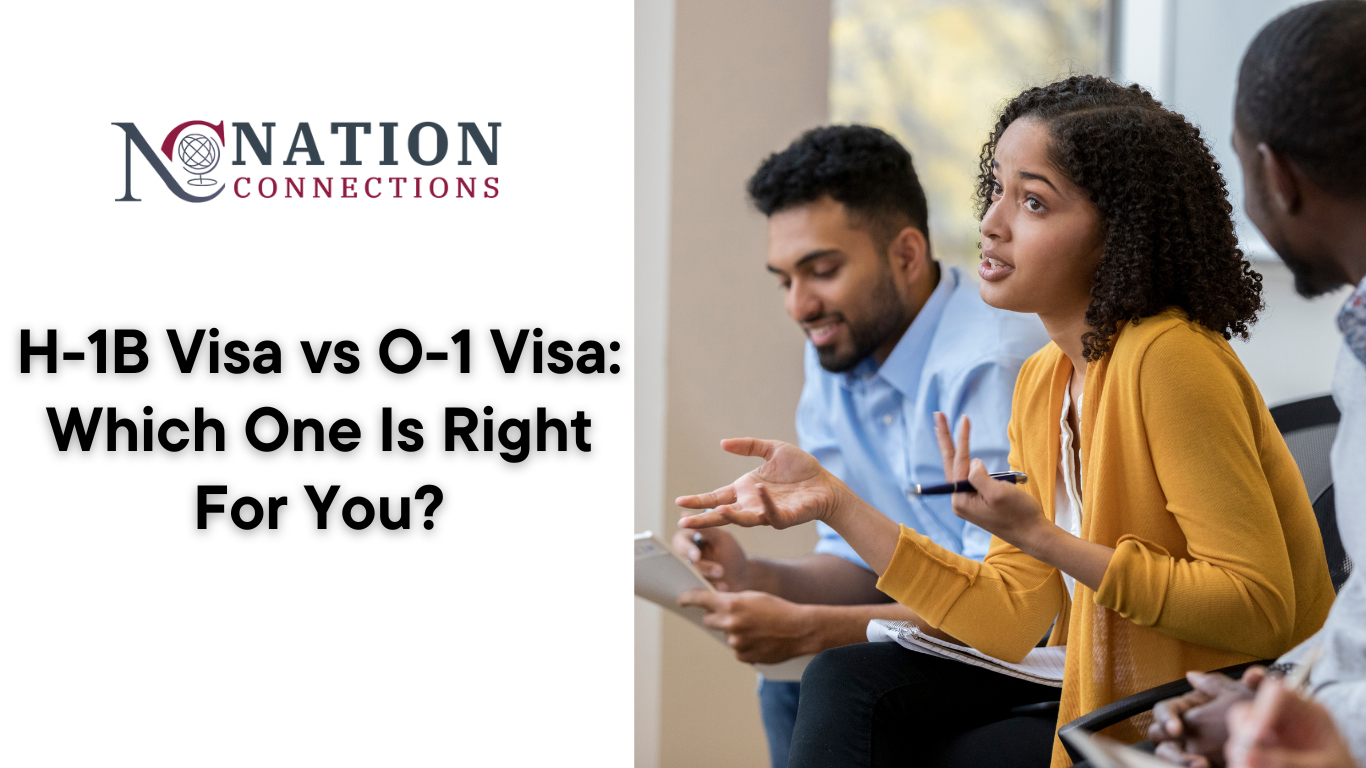
Navigating the complexities of U.S. immigration can be daunting, especially when choosing between the H-1B and O-1 visas. Both offer pathways for professionals to work in the United States, but they cater to distinct qualifications and career trajectories. Understanding the nuances of each can help you make an informed decision aligned with your professional aspirations.
Understanding the H-1B Visa
The H-1B visa is designed for foreign professionals in specialty occupations that require at least a bachelor’s degree or its equivalent. Fields commonly associated with H-1B visas include information technology, engineering, mathematics, and business. This visa allows U.S. employers to hire foreign workers for up to six years, typically granted in an initial three-year period with the possibility of a three-year extension.
Eligibility Criteria for H-1B Visa
To qualify for an H-1B visa, applicants must:
Possess a bachelor’s degree or higher in the specific specialty occupation.
Secure a job offer from a U.S. employer who will sponsor the visa.
Ensure the role qualifies as a specialty occupation requiring specialized knowledge.
Advantages of the H-1B Visa
Dual Intent: H-1B visa holders can pursue permanent residency (green card) without jeopardizing their visa status.
Portability: Allows visa holders to change employers, provided the new employer sponsors a new H-1B petition.
Spousal Work Authorization: Spouses (H-4 visa holders) can apply for work authorization under certain conditions.
Limitations of the H-1B Visa
Annual Cap: Subject to an annual cap of 65,000 visas, with an additional 20,000 reserved for applicants with a U.S. master’s degree or higher. This cap often leads to a lottery system due to high demand.
Time Restriction: Maximum duration of six years, after which the individual must leave the U.S. or change visa status.
Understanding the O-1 Visa
The O-1 visa is tailored for individuals with extraordinary ability or achievement in fields such as sciences, arts, education, business, or athletics. It recognizes those who have attained a high level of expertise and have received national or international acclaim.
Eligibility Criteria for O-1 Visa
Applicants must demonstrate:
Sustained national or international acclaim with evidence of major awards or significant achievements.
A high level of expertise indicating they are part of a small percentage at the top of their field.
Advantages of the O-1 Visa
No Annual Cap: Unlike the H-1B, the O-1 visa is not subject to an annual limit, allowing applications year-round.
Indefinite Extensions: Initially granted for up to three years, with unlimited one-year extensions based on ongoing projects or engagements.
Higher Flexibility: Suitable for freelancers or those with multiple employers, provided each engagement qualifies.
Limitations of the O-1 Visa
High Eligibility Threshold: Requires substantial evidence of extraordinary ability, making it challenging for many applicants.
Spousal Work Restrictions: Dependents (O-3 visa holders) cannot work in the U.S.
Key Differences Between H-1B and O-1 Visas
| Aspect | H-1B Visa | O-1 Visa |
|---|---|---|
| Eligibility | Bachelor’s degree in specialty occupation | Extraordinary ability with national/international acclaim |
| Annual Cap | 65,000 (plus 20,000 for advanced U.S. degrees) | No cap |
| Duration | Up to 6 years (initial 3-year period, plus 3-year extension) | Initial 3 years, with unlimited 1-year extensions |
| Spousal Work Rights | H-4 spouses can work under specific conditions | O-3 spouses cannot work |
| Application Timing | Limited window; subject to lottery | Year-round application; no lottery |
Choosing Between H-1B and O-1 Visas
Your decision should align with your qualifications and career goals:
H-1B Visa: Ideal for professionals with specialized knowledge seeking employment in the U.S. who meet the educational requirements and are prepared for the lottery system.
O-1 Visa: Suited for individuals with a proven record of extraordinary achievements in their field, looking for flexibility and not constrained by annual caps.



